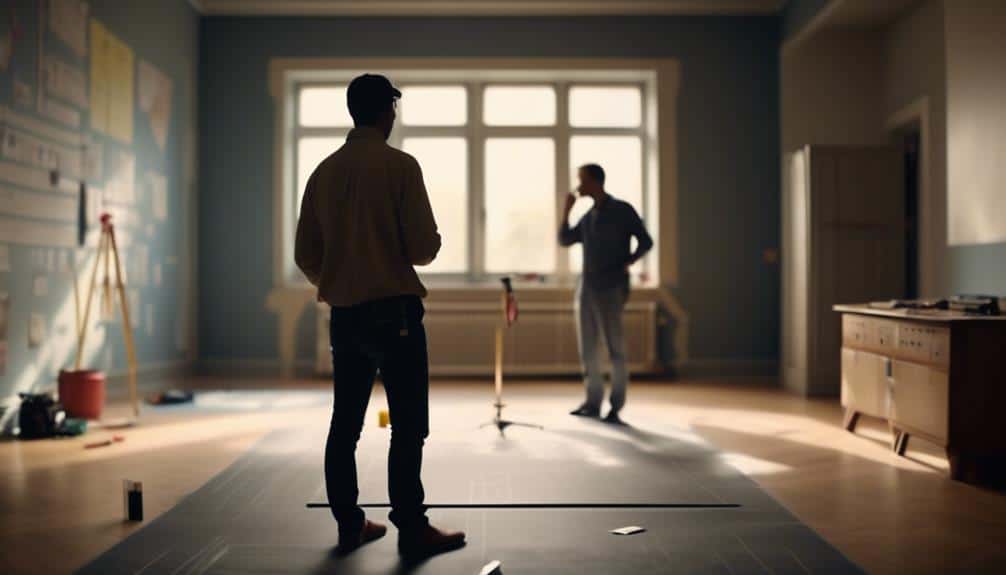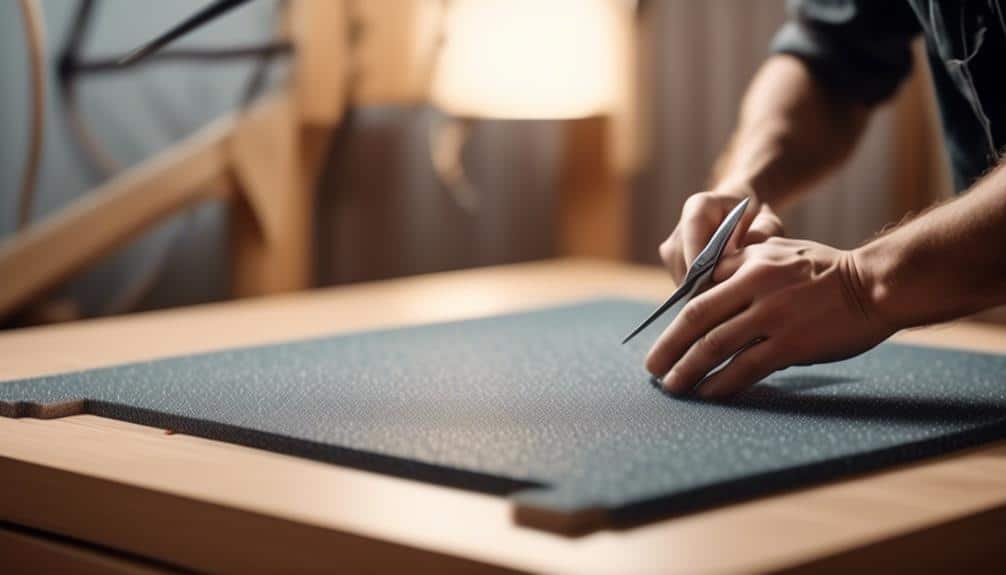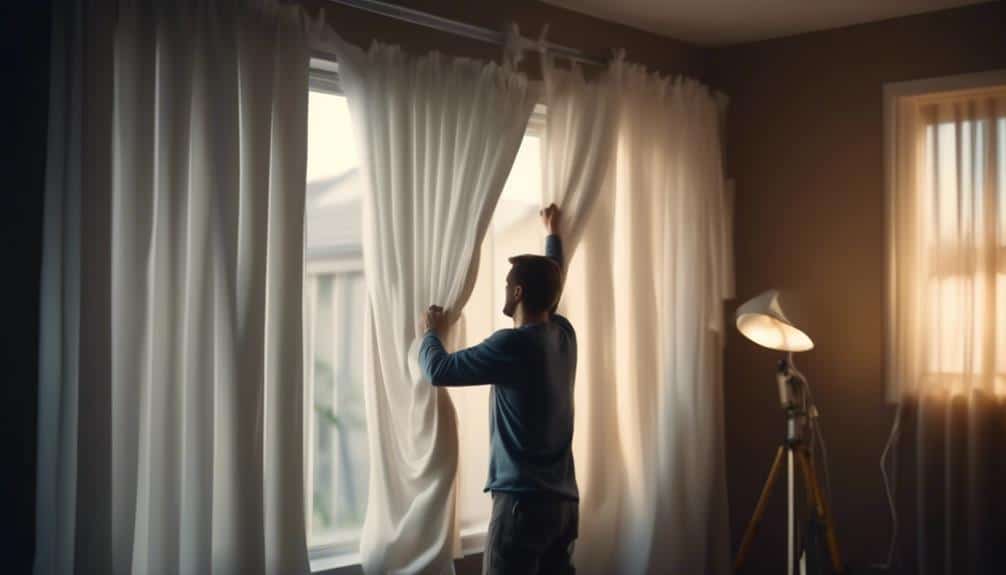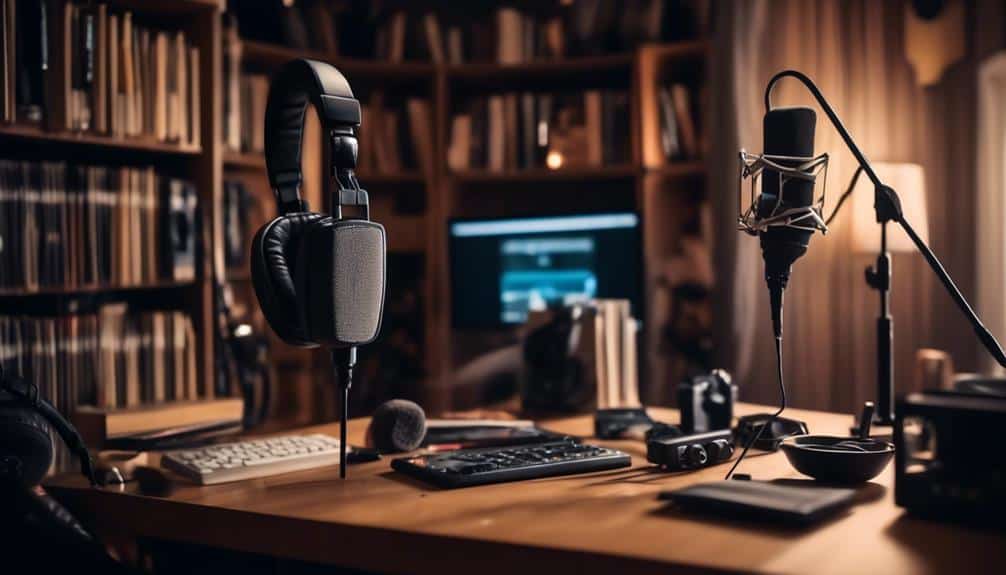DIY Soundproofing: Creating the Ideal Home Studio for Podcasting
Imagine recording your podcast in your home studio, uninterrupted by outside noises and distractions. You've spent hours perfecting your content, but the background hum of traffic or the echo of a neighbor's conversation can ruin your recordings.
What if there was a way to create a quiet oasis for your creativity right in your own home? You may be surprised to learn that with a few simple soundproofing techniques, you can significantly improve the audio quality of your podcast recordings.
Key Takeaways
- Choose a square or rectangular room away from noisy areas for optimal soundproofing.
- Equip the room with soundproofing insulation, acoustic foam, and soundproofing curtains for effective sound absorption.
- Utilize bulky furniture placement, thick rugs, and high-density fiberglass panels strategically for enhanced soundproofing.
- Seal air leaks with weather stripping, caulking, insulating foam, and draft stoppers to prevent sound leakage and maintain a quieter environment.
Choosing the Right Room

When selecting a room for your home podcasting studio, consider the space's size and layout to optimize soundproofing effectiveness. The room layout plays a crucial role in soundproofing. Choose a room away from noisy areas like the street or a busy part of your home. If possible, opt for a square or rectangular room as irregular shapes can cause sound reflections.
Furniture placement is equally important. Start by placing bulky furniture like bookshelves, couches, or sound-absorbing panels along the walls to reduce sound reflections. Consider adding a thick rug to the floor to minimize sound bouncing off hard surfaces. Keep in mind that furniture with soft materials absorbs sound better.
Experiment with different furniture arrangements to find the optimal setup for soundproofing. Remember, the goal is to minimize echoes and external noises, creating a controlled acoustic environment for your podcasts. By strategically planning your room layout and furniture placement, you can significantly enhance the soundproofing of your home podcasting studio.
Soundproofing Materials and Tools
To improve the soundproofing of your home podcasting studio, equip yourself with the right soundproofing materials and tools for effective noise reduction. Start by considering soundproofing insulation and acoustic foam. Soundproofing insulation, such as mineral wool or cellulose, can be added within walls or ceilings to absorb and reduce sound transmission. Acoustic foam, with its unique textured surface, helps in dampening sound waves within the room, minimizing echoes and reverberations.
Another essential option is soundproofing curtains. These curtains are designed with dense materials that help block out external noises and absorb internal sounds, offering a simple yet effective solution for your studio. Additionally, soundproofing paint can be a valuable tool in reducing noise. This specialized paint contains layers of soundproofing material that help in sound absorption, making it an excellent choice for walls and ceilings.
Building Acoustic Panels

Consider using high-density fiberglass panels when building your acoustic panels for optimal sound absorption and noise reduction in your home podcasting studio. These panels are effective at absorbing sound waves and preventing them from bouncing around the room, improving the overall acoustics of your recording space. When constructing your acoustic panels, ensure they're thick enough to provide sufficient sound absorption.
For panel placement, strategically position the acoustic panels on the walls where sound reflections are prominent to minimize echoes and reverberations in your recordings.
Cost considerations are important when deciding between DIY construction or professional installation of acoustic panels. DIY construction can be a cost-effective option, allowing you to customize the panels to fit your studio's aesthetics and dimensions. However, if precision and expertise are crucial, professional installation may be worth the investment.
Sealing Air Leaks
For optimal soundproofing in your home podcasting studio, address air leaks by sealing gaps and cracks to enhance the acoustics of your recording space.
To effectively seal air leaks in your studio, consider using weather stripping and caulking to fill in any openings around windows, doors, and electrical outlets. Weather stripping, which comes in various materials like rubber or foam, is ideal for creating a tight seal between movable building components. Caulking, on the other hand, is perfect for sealing stationary joints such as those around window frames and baseboards.
Insulating foam can also be used to fill larger gaps or holes, providing an extra layer of soundproofing. Additionally, draft stoppers placed at the bottom of doors can prevent sound leakage and help maintain a quieter environment inside your studio.
Managing External Noise

To manage external noise when podcasting at home, consider noise-reducing curtains and ensure windows and doors are properly sealed. These methods can help minimize unwanted sounds from entering your recording space, allowing for a quieter environment conducive to podcasting.
Noise-Reducing Curtains
When selecting noise-reducing curtains for your home podcasting setup, ensure they're specifically designed to effectively block external sounds.
- Curtain Options and Installation
- Look for curtains with heavy materials like velvet or suede for better sound insulation.
- Opt for floor-to-ceiling curtains to minimize sound leakage from windows and doors.
- Consider installing curtain rods with a snug fit to prevent gaps that sound could travel through.
These curtains not only provide privacy and style but also offer essential sound absorption properties crucial for maintaining a quiet podcasting environment. Make sure to choose curtains that fit your aesthetic preferences while prioritizing their noise-reducing capabilities to create an ideal space for recording high-quality podcasts.
Seal Windows and Doors
Consider utilizing weather stripping or acoustic caulk to seal windows and doors in your home podcasting space.
Weather stripping, typically made of foam, rubber, or silicone, is excellent for sealing small gaps and stopping drafts. Ensure a tight seal by applying weather stripping around the window sash and door frame.
For larger gaps or areas that need more flexibility, opt for acoustic caulk. Acoustic caulk is specially designed to absorb sound and prevent noise from leaking in or out.
Additionally, draft stoppers placed at the bottom of doors can further enhance the soundproofing of your room.
Setting Up Recording Equipment
Begin by calibrating the microphone levels to ensure optimal sound quality for your home podcast recordings.
- Microphone Placement and Equipment Setup
- Position your microphone at a distance of about 6-8 inches from your mouth to capture clear audio without picking up too much room noise.
- Use a pop filter to reduce plosive sounds like 'p' and 't' for a smoother listening experience.
- Invest in a shock mount to isolate the microphone from vibrations or accidental bumps, maintaining a consistent sound quality.
Setting up your recording equipment is crucial for producing professional-grade podcasts. Proper microphone placement and equipment setup can significantly impact the clarity and overall quality of your recordings.
Additionally, consider the room acoustics and sound treatment in your recording space to minimize echoes and unwanted background noise, ensuring a clean audio output.
Frequently Asked Questions
How Can I Soundproof a Room Without Completely Renovating It?
To soundproof a room without a complete renovation, consider temporary solutions like heavy curtains, rugs, or foam panels. These cost-effective alternatives can absorb sound and reduce noise. Get creative with quick fixes to improve acoustics.
Are There Any Eco-Friendly Soundproofing Materials Available?
You'll be pleased to know there are sustainable alternatives for soundproofing. Look into green soundproofing options like recycled denim insulation, cork panels, or acoustic tiles made from recycled materials. These choices are both eco-friendly and effective.
Can I Use Household Items to Help Soundproof My Home Studio?
You can definitely use household items to soundproof your home studio. Get creative with DIY solutions like heavy curtains, rugs, blankets, or egg cartons. These budget-friendly options are unconventional but effective in reducing noise.
How Can I Prevent Sound Leakage Through Doors and Windows?
To prevent sound leakage through doors and windows, consider using weather stripping and draft stoppers to seal gaps. Additionally, hang thick curtains to absorb sound waves. Acoustic panels can also help reduce reverberations and enhance sound quality.
What Are Some Tips for Reducing Echo and Reverberation in My Recording Space?
To reduce echo and reverberation, place acoustic panels strategically on walls. Install soundproof curtains over windows to further absorb sound. Proper placement of panels and curtains enhances audio quality in your recording space.
Conclusion
In conclusion, by carefully selecting the right room, utilizing soundproofing materials and tools, building acoustic panels, sealing air leaks, managing external noise, and setting up recording equipment, you can create the ideal home studio for podcasting.
With attention to detail and proper implementation of soundproofing techniques, you can ensure a quiet and controlled environment for recording high-quality audio. Follow these steps to achieve professional results in your podcasting endeavors.








